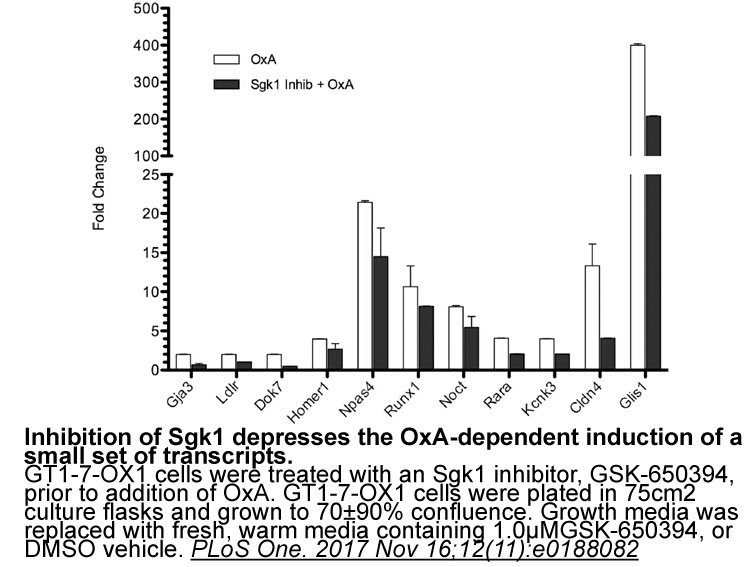Archives
What is the predominant mechanism underlying the benefits of
What is the predominant mechanism underlying the benefits of udenafil, i.e. the vascular vs. myocardial effect? Lewis et al. suggested that the benefit of sildenafil in HFrEF would be derived from augmented RV systolic function that mainly results from pulmonary vasodilation, suggestive of the ‘vascular effects’. On the other hand, other report demonstrated significant improvement in LV systolic/diastolic functions with sildenafil, more supporting the ‘myocardial effects’. All of these findings allude to beneficial effects of sildenafil through both mechanisms. We observed, in the present study, significant improvement in LV systolic/diastolic functions that are accompanied by a slight improvement in effective arterial elastance and a weak trend of a rise in total arterial compliance by udenafil treatment. Based on our findings, we suppose that the direct ‘myocardial effects” is a predominant mechanism of the udenafil benefit observed.
Due to its high selectivity for pulmonary vasculature, PDE5 inhibitor is expected to have advantage over nitrate in the management of HFrEF, anticipating less hypotensive episodes. As shown in this p2y receptor trial , udenafil benef ited LV systolic/diastolic
ited LV systolic/diastolic  functions mainly by the ‘myocardial effects’ from the hemodynamic viewpoint, and simultaneously improved subjective/objective exercise capacity from the clinical viewpoint. Moreover, safety profiles are acceptable. Although we do not have experimental evidence for comparative treatment efficacy with udenafil vs. sildenafil, patient compliance would be better with udenafil administration, because the prescribed medication frequency on a daily basis is generally accepted to have a significant impact on patient compliance.17, 18, 19, 32
functions mainly by the ‘myocardial effects’ from the hemodynamic viewpoint, and simultaneously improved subjective/objective exercise capacity from the clinical viewpoint. Moreover, safety profiles are acceptable. Although we do not have experimental evidence for comparative treatment efficacy with udenafil vs. sildenafil, patient compliance would be better with udenafil administration, because the prescribed medication frequency on a daily basis is generally accepted to have a significant impact on patient compliance.17, 18, 19, 32
Conclusions
Disclosure
Acknowledgement
Erectile dysfunction (ED) is defined as a man\'s consistent or recurrent inability to attain and/or maintain penile erection sufficient for sexual activity. ED often affects patients\' physical and psychosocial health and has a significant effect on the quality of life of patients and their partners and families. Epidemiologic studies have suggested that the incidence of moderate to severe ED is approximately 5%-20% of men., For ED, the common risk factors are cardiovascular disease and diabetes, except for radical prostatectomy.
Currently, numerous strategies have been used to overcome ED. The treatment options for ED include oral medications, psychological management, vacuum constriction devices, intracavernosal injections, transurethral drug delivery, penile prostheses, vascular surgery, and discontinuation of medications that can cause ED. Men have reported a clear preference for oral medications, which are considered first-line therapy for those who do not have a specific contraindication to their use. Three phosphodiesterase type 5 inhibitors (PDE5-Is), sildenafil (Viagra), vardenafil (Levitra), and tadalafil (Cialis), have been introduced in the management of ED. As is well known, the nitric oxide (NO)/cyclic guanosine monophosphate (cGMP)/cGMP-dependent protein kinase I pathway serves as the principal regulatory basis for penile erection. Accordingly, selective inhibition of PDE5, which catalyzes the degradation of cGMP, is the essential mechanism underlying the action of sildenafil.
In recent years, a new oral selective PDE5-I, udenafil (Zydena, Dong-A, Seoul, Korea), has been developed for the treatment of ED. Its pharmacokinetic profiles include a time to reach a peak plasma concentration (Tmax) of 1.0-1.5 hours and a half-life of 11-13 hours, which would confer unique clinical properties of both relatively rapid onset and long duration of action. Moreover, the isoenzyme selectivity profile of udenafil is similar to that of sildenafil. Several randomized controlled trials have reported the clinical effectiveness and safety of udenafil for ED. However, to date, no systematic review and meta-analysis, including randomized controlled trials, have been performed to determine the effectiveness and safety of udenafil for ED. Therefore, this meta-analysis was performed to evaluate the efficacy and safety of udenafil for patients with ED to provide more reliable evidence for the use of udenafil.